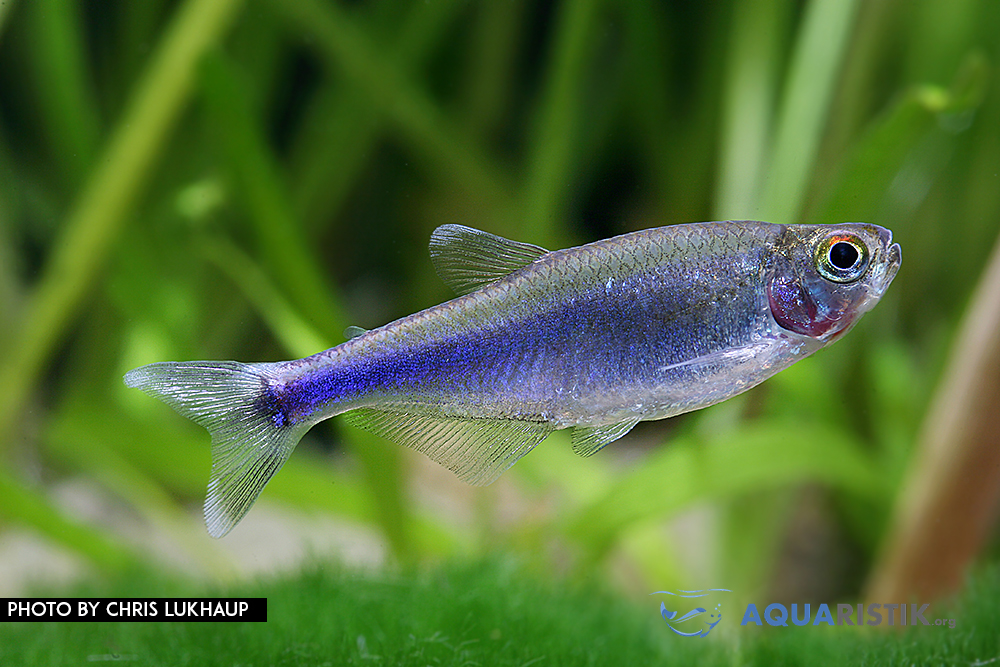Characteristics Blue Peruvian Tetra Boehlkea fredcochui: Tetras are probably one of the most popular fish in our aquarium. Above all, their species makes tetras something special. One of them is certainly the blue Peru tetra Boehlkea fredcochui. In this article you will find out everything you need to know about Breeding, husbandry and care. The question of how big does an aquarium have to be and what water values do I need are answered as well as the question of which socialization and by the group and size of the blue Peru Tetra.

Origin of the Blue Peru Tetra
Let's start with the origin of the animals, because this ornamental freshwater fish does not come from Europe either, but has its main distribution area in Ecuador. But this fish can also be found in Peru and Colombia. South America seems to be a good place for many tetra species. But there it does not live in black water, but the blue Peru tetra lives in white water like that of the Rio Maranon. The Peru tetra is usually found in large swarms. The water should be clear and have a good current. Especially in the Amazon you can find many of these rivers.
Characteristics of the Blue Peru Tetra
Now we come to the appearance and characteristics of the Peruvian Blue Tetra. The shape of the Blue Peru Tetra can be compared to the typical shapes of other tetras. It has an elongated body and the basic color of the fish is olive. As the name suggests, the typical feature is the blue glowing tail. A longitudinal band extends from the gill cover to the caudal fin. This is light blue in the female and violet in the male. This allows the blue Peru tetra to be easily distinguished. Especially the males can still have a black border. Blue Peru tetras usually live to be around 3 years old. We also want to go into the size of the ornamental fish. They grow up to 5cm tall.
Perhaps a word about its species. Blue Peru tetra is a very active swimmer and it should also have a suitable place for it. However, socialization should also be taken into account, because especially quiet species have their problems with the lively behavior.
Husbandry and care of the blue Peru tetra
Now let's move on to care and maintenance. As described above, tetras are good swimmers and therefore need a lot of space. Since the animals can grow up to 5 cm in size, they should not be kept under 100 liters, but it is better to keep them in aquariums with an edge length of 100 cm or more. They are also schooling fish and only really come into their own when kept in a school of 10 or more fish.
The blue Peru tetra love the current and therefore you should pay attention to it in the aquarium. A corresponding aquarium filter must be provided. Of course, this also has an impact on socialization.
When it comes to aquarium lighting, you should make sure that it is not too glaring and bright, because then the bright and shimmering colors of the blue Peru tetra will not come into their own. We recommend installing appropriate dimming here.
Let's get to the water values. Here you can use the animals at a temperature between around 22 and 26 degrees. In addition, the PH value should be around 6 to 7,5. The hardness of the water should be set to 5 - 14 degrees.
Characteristics of the Blue Peru Tetra
- Keep in groups of 10 or more animals
- Aquarium from 100 liters better from 200 liters
- There should be a large current
- dim light T
- temperature 22 to 26 degrees
- Ph value 6 - 7,5
- GH to 15
- Socialization with fish that like the more hectic behavior
Breeding of the Blue Peru Tetra
Here you have to address the rather difficult breeding right away. With us, hobby breeders tend to breed less of this type of tetra. On the one hand you have to ensure very soft water and of course a special breeding environment. The animals are free spawners and above all need suitable planting. In addition, the blue Peru tetras are also spawn robbers, so they have to be removed from the tank very quickly once the spawn has been laid. The juveniles and larvae are then fed nauplii and artemia.
Another very beautiful fish is certainly the Roach Moenkhausia. There are even more tetras in our tetra section.



